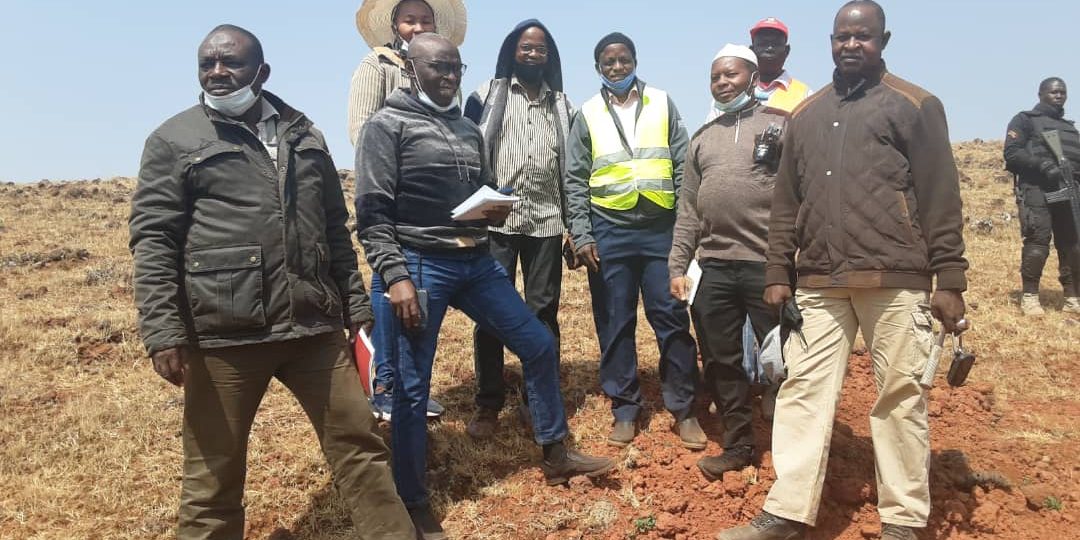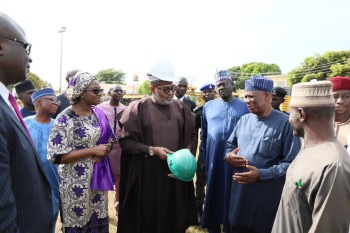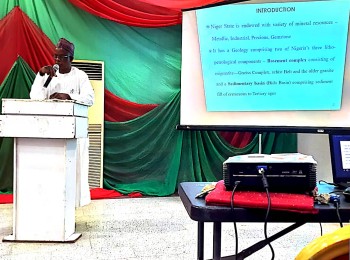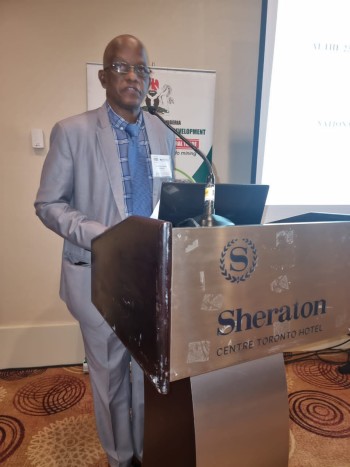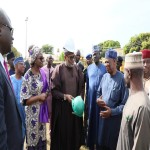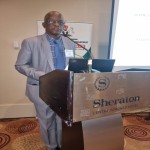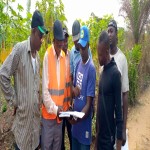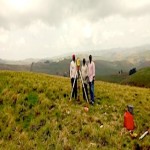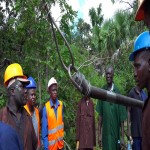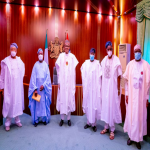- 07 Apr 2021
- Admin

In a bid to physically ascertain the level of work done so far and ensure that resources deployed are judiciously utilized at the Mambila Bauxite project, the Director General of the National Steel Raw Materials Exploration Agency, Engr (Dr) Umar Albarka Hassan recently embarked on a monitoring exercise of the area in company of Directors of the Ministry of Mines and Steel Development and other staff of the agency.

Members of the monitoring team included the Director of Steel, Ministry of Mines and Steel Development, Engr. M. K. Olasupo; Director of Metallurgical Inspectorate of the Ministry and Board Member of the agency, Engr. Kehinde; heads of units and departments of the agency, including the Head of Corporate Planning, Mr. T. O. Ajao; Head of Coal and Industrial Minerals, Mr. M. O. Adeniji; Project Leader, Mr. A. M. Daya and Project Accountant on Bauxite Exploration, Mrs Z. Gadzama.
The team’s first stop was a courtesy call on the traditional rulers of the community, such as the Lamido of Nguroje and the Galadima of Nguroje. The DG thanked the leaders for their reception and support for the team thus far, stressing that such projects will attract development to host communities when fully maximised. On his part, the Lamido thanked government for having an interest in the community and working to ensure the Bauxite potential in the area is explored for economic development.


The team visited Blocks 3, 4 and 5 with 3 pits and a trench inspected. Giving a geological background during the inspection tour, the Project Team Leader, Audu Daya noted that the bauxite was formed as a result of weathering of volcanic rocks like Trachyte, with gibbsite as the main mineral phase. He added that the area is underlain by Precambrian Basement rocks comprising migmatites and gneisses intruded by tertiary to recent volcanic rocks.

A total of 120 pits were excavated in 2020 at the Mambila project site on a regular grid interval of 100m by 100m at an average depth of 4 meters each. Current analyses have shown A12O3, SiO2 and Fe2O3 occurring at an average of 45%, 12.30% and 14.80% respectively, with the first two blocks reported to have an estimated measured resource of 7.5 million metric tons.
The team expressed satisfaction at the level of work done so far and urged the technical staff on ground not to relent as the agency continues in its efforts to support the federal government’s commitment to grow the mining sector for economic diversification.


